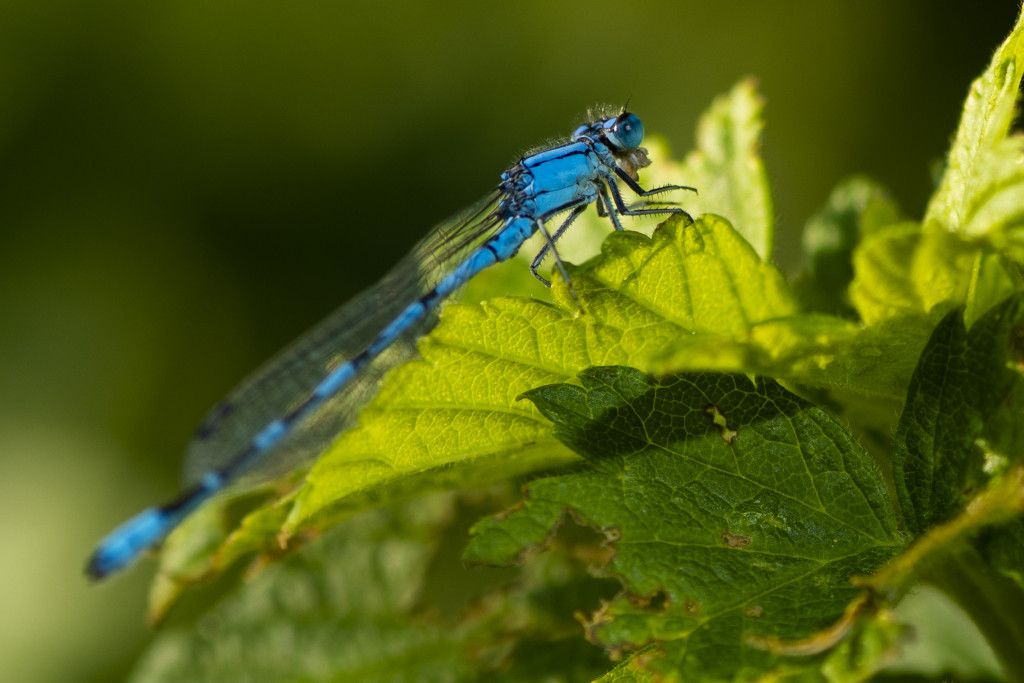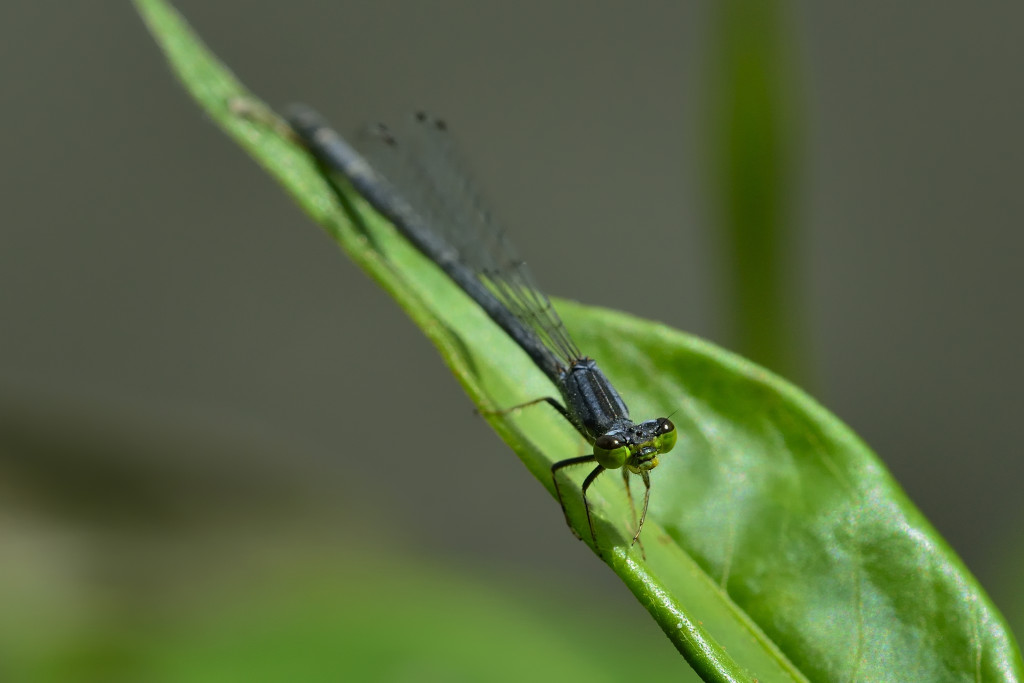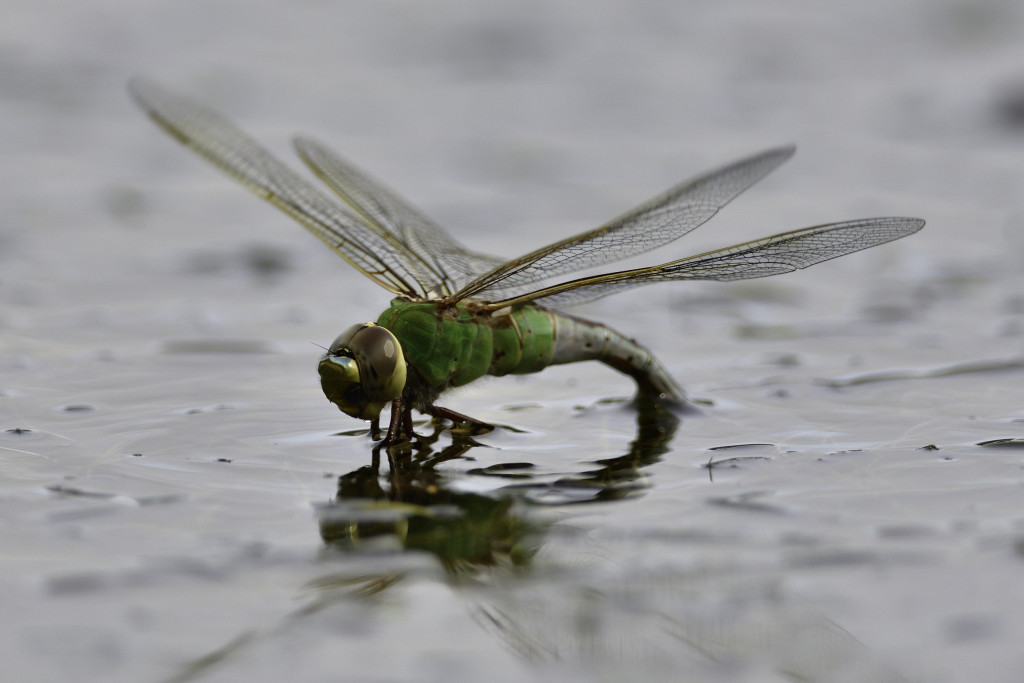
By Monica Macoubrie, Wildlife Education Specialist
The words “dragons” and “damsels” might remind you of the fairytales you heard or read a child — of daring swordfights, far-off places, dragons to conquer and of course, the damsel in distress. Well, it’s 2023, and women can fight their own way out of perilous situations. This story will discuss different dragons and damsels – the insects known as odonates.
Belonging to the order Odonata, these insects are collectively known as dragonflies and damselflies. If you are out and about this season, you may notice quite a few of them hovering around. But, is it a dragonfly or a damselfly?
Life History
Dragonflies are among the earliest and oldest flying insects – nearly 325 million years old. So old that they pre-date dinosaurs. Not only that, they also were incredibly large. This ancient group known as the Meganisoptera included the largest known insect that ever lived, which had a wingspan of nearly 30 inches. This group of insects is also called darner or devil’s arrow.
Although dragonflies and damselflies belong to the same order, they are different enough to warrant two separate suborders. Both dragonflies and damselflies are predatory insects with around 3,000 species worldwide and are most commonly found around freshwater habitats.

Dragonflies and damselflies go through three stages in their development called incomplete metamorphosis. This is a different process than that of a butterfly, which goes through four stages in its lifecycle and is known as complete metamorphosis. Dragonflies and damselflies skip the cocoon/chrysalis stage. Young are called nymphs, or sometimes naiads, which live in the water before emerging as their final adult aerial form.
Eyes
Both dragonflies and damselflies are carnivorous, which means they use their eyes to hunt and snatch prey out of the air. However, the placements of their eyes is different in comparison to each other.
Dragonflies have large eyes, which almost seem to touch each other and take up most of their head. Damselflies also have incredibly large eyes, but there is usually a noticeable gap between them.
The compound eyes of dragonflies and damselflies help them see and sense movement in any direction. These eyes can also perceive color, light polarization and even UV light.

Body Shape
Probably the most noticeable difference between dragonflies and damselflies is their body shapes. Dragonflies, on average, have a bulkier body shape compared to that of damselflies, which looks slender and more stick-like. To help you remember this, think “damsel in distress,” or more fragile.
Wing Shape
A dragonfly or damselfly flying almost looks ethereal, but identifying them in the air is tricky, even for experts. Wait for one to land and look at its wing placement.
Both dragonflies and damselflies have two pairs of wings. However, dragonflies have hindwings that are larger than their forewings that get broader toward the base. Each pair of wings can function independently from the other. The wings have tiny pockets that catch the tiniest gusts of wind, which enable the dragonfly to take flight quickly. They can fly in any direction, even backwards.
Damselflies have wings that similar in size and shape for both pairs, and they become quite narrow toward the body.
When resting, dragonflies hold their wings perpendicular and flat to their bodies, whereas damselflies usually fold their wings up and out of the way, holding them together across the top of their backs.

Dragonflies and damselflies have unique mouthparts as nymphs called labial masks. This mouthpart opens and extends outwards like an arm sitting right under the chin. Sometimes, larger dragonfly larvae can even catch and eat a small fish or tadpoles.
To breathe underwater, both dragonflies and damselflies complete this task differently. Dragonflies breathe through gills in their abdomens, basically “butt-breathing,” and can even use it to propel themselves out of a sticky situation. Dragonfly nymphs are more roundish and stockier in appearance. Damselfly nymphs look like they have a propeller sticking out from their butt, which are actually gills.
So, next time you see a dragonfly or damselfly, keep this information in mind to help you identify their subtle differences.
